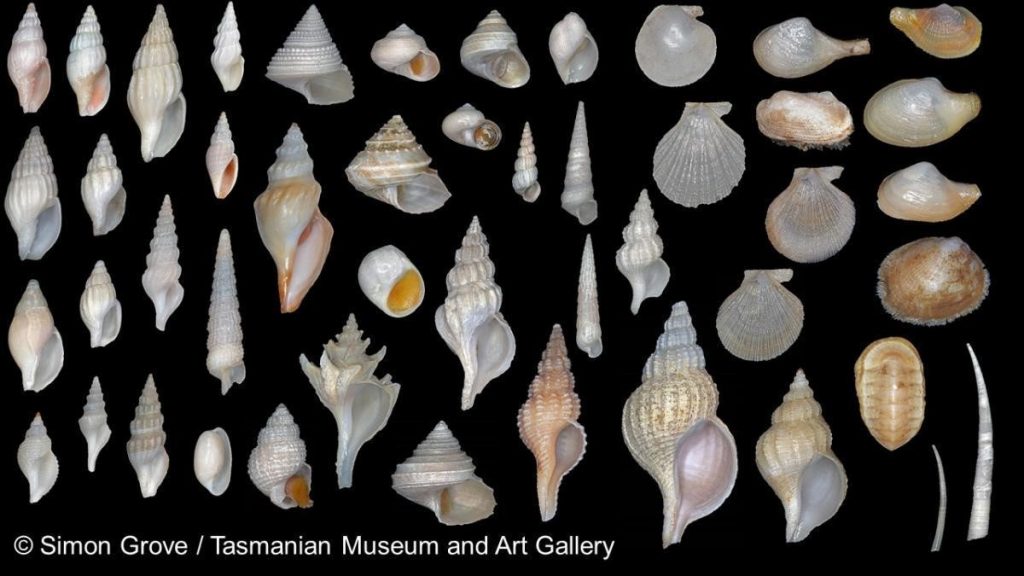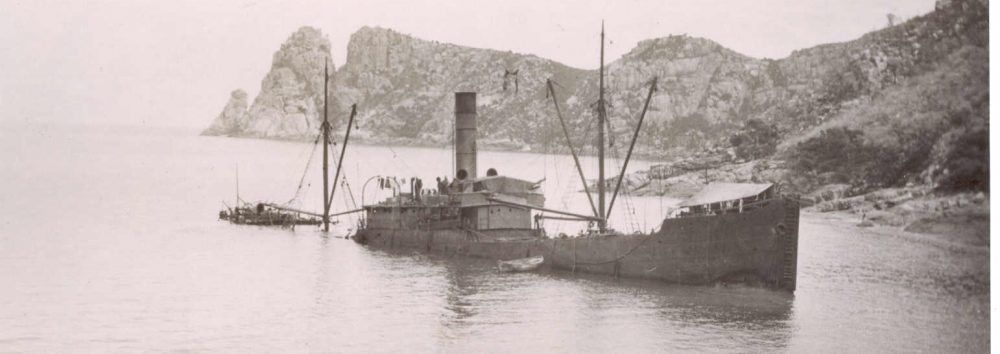Investigating Seamounts with the CSIRO

Corallimorpharia is a type of coral from the ocean’s depths.
Photo: Rob Zugaro/Museums Victoria.

Crinoids, urchins and octocorals on an isolated drop-off on the St Helens seamount. Image: CSIRO
A 2018 voyage by the RV Investigator was intended to study the Status and recovery of deep-sea coral communities on seamounts in iconic Australian marine reserves. This was primarily done on seamounts of eastern and southern Tasmania including some that had been previously trawl fished for orange roughy in the 1990s.
The number seamounts is about 35,000 large seamounts (higher than 1 km), and about 140,000 small seamounts (knolls and hills down to 100 m height).
The numbers of seamounts differ between oceans. The Pacific is the ocean with the largest number of these features (60% of large seamounts, 50% of small ones) and the south-west Pacific is especially rich in smaller features. There are well over 100 of these types of features in the Tasman Fracture Zone and Huon marine parks.
Australia has gazetted deep sea Marine Parks that includes the ‘Huon’ and ‘Tasman Fracture’ parks off southern Tasmania. These seamounts (‘undersea mountains’) support unique deep-sea coral reefs. These reefs rank among the most bio-diverse globally. Deep-water corals are very fragile, easily impacted and are believed to recover very slowly. These corals may also be highly vulnerable to climate change because projected changes in water chemistry could limit the ability of corals to build calcareous skeletons. Scientist wanted to compare samples taken in 2018 to samples taken, using similar methods on the same seamounts, in 2007 and 1997.
The second part was additional sampling on the heavily trawled St. Helens Seamount which was surveyed in 2008, to check on recovery after damage and to compare it with studies from New Zealand.
Tasmania’s seamounts came into focus in the 1980s, when Orange Roughy fisheries developed around New Zealand and Australia. The fishing industry explored the Tasmanian area and discovered many seamounts, but the bigger picture emerged in the 2006 when wide swaths of seafloor were mapped by scientists using multibeam sonar, revealing an extraordinary underwater scene of more than 100 seamounts. The fishing industry agreed to cease fishing an area the size of Bruny Island while CSIRO surveys mapped the area and evaluated the coral communities and the seamount biodiversity more generally. Subsequently, when the conservation importance of the seamount coral communities was fully recognised, the area became the world’s first deep-sea protected area, and is now part of Huon Marine Park.The voyage focussed primarily on surveys of seamounts at mid-slope depths (~500-2000 m). Towed camera transects, sampling of water chemistry, static camera drops and beam trawl collections of benthic fauna were done. There was also some targeted multi-beam sonar mapping of gaps in study area coverage. Baited video samplers were also used at several seamount locations. These showed few signs of recovery in trawled areas with some obvious signs of past damage, as well as lots of lost fishing gear.

The trawl wire snagged here is an relic of past fishing. Image: CSIRO
Some sections of individual, typically shallower, Tasmanian seamounts that held orange roughy were repeatedly fished, removing the coral communities under the fishing tracks. The fact that there are seamounts with contrasting fishing histories – still fished, previously fished and never fished – offers a unique opportunity to make comparisons, and we’ll be doing that on this voyage to better understand how these slow-growing communities recover. We first looked for signs of recovery 10 years ago, but found little new life in the areas where coral had been removed. We’ll also be looking on the many smaller seafloor features between the seamounts, to map the broader distribution of coral communities. Main Matt was one of the main southern fishing grounds for orange roughy and between 1987 and 2006 there were more than 5000 tows on this single seamount capturing many tonnes of roughy.

Plastic bags have been observed in the deepest ocean trenches, and this Investigator survey has encountered rubbish on the seafloor: in the beam trawl and on camera. Apparently the rubbish was worse the deeper they went.

A montage of some of the larger deep-sea molluscs previously collected from the Tasmanian seamounts. Image: Simon Grove, TMAG

A picturesque crab from a beam trawl. Image: Fraser Johnston/CSIRO
Deep-sea corals mainly rely on zooplankton and dissolved nutrients from sources outside their habitat for their energy supply. As such they are found in places such as seamounts, where currents deliver food supplied by upwelling nutrient-rich water. Deep-sea coral reefs thrive in temperatures of 4–12?C. In contrast, shallow-water coral reefs exist in the clear, warm waters of the tropics and subtropics. Both kinds of corals, however, need hard substrates to settle on and that is one of the reasons why they are mainly found on the edges of continental shelves, slopes, ridge systems and seamounts. You won’t find them on the slippery sediments of deep-sea plains.
Corals in general are ‘ecosystem engineers’. They build complex three-dimensional frameworks that provide sub-habitats for a diversity of other organisms. In the deep-sea, this job is done by a relatively small proportion of the overall hard coral, or scleratinian, species. On the Tasmanian seamounts the main reef-building species is Solenosmilia variabilis. Solenosmilia is very important because it supports a high diversity of animals (about 850 animal species). On a single survey, 299 species of animals were sampled from these seamounts.

It is technically difficult to capture many deep-sea animals effectively. Trailing a small net several kilometres behind and several kilometres under a vessel is tricky, and captures mostly bottom dwelling species and does damage too but its unavoidable.
At Andy’s Hill from 730 to 900 m where a large variety of golden corals (Chrysogorgia) had been seen on video. The trawl did not disappoint and although overall diversity was quite low (only five molluscs, one of which had not been seen before), there were four species of Chrysogorgia, one rather surprisingly turning out to be the ‘yellow fluffy stuff’ we have had trouble identifying on video – or at least one type of that loose classification
The abundance of Chrysogorgia also provided a good selection of the animals that live in this finely branched octocoral, including an obligate shrimp possessing an oversized claw with features just the right size to clean the coral branches. Interestingly some of the Chrysogorgia which are relatively fast growing and reached 30-40cm in this sample, showed signs of having been broken off close to the base as did some of the non-walking stalked crinoids in the catch, suggestive of regrowth after a traumatic event, such as a trawl passing through, but further examination back in the lab will be required.
Then it was back to the deep towed camera, where we completed the shallower background transects coming down off the slope in our continuing search for an upper limit to the distribution of stony corals in this area. Camera tows started at 650-850 m often characterised by diverse communities including gold corals, black corals, crinoids and sponges. A few Solenosmilia clumps were seen starting at about 900m, sometimes preceded by what appeared to be dead coral matrix, and extending to the end of transects at 1000-1100 m depth where isolated clumps continued to be seen on some of the boulders or other raised features.Corals, molluscs and fish are generally much less diverse in deep-sea coral reefs. I specialise in nudibranchs (molluscs also known as ‘sea slugs’) and I could see this difference first hand: we’ve only found five nudibranch species so far, a pretty low number compared to what you would expect in tropical coral reefs. However cold-water reefs are also considered major speciation centres, especially on seamounts, with often a high degree of endemism. On a 2007 survey 24–43% of the species found on the Tasmanian Seamounts were new to science and are endemic to this region. Most were associated with Solenosmilia.
